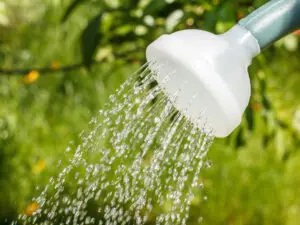Delphinium: A Look at the Majestic Blue Flower
While most purples have a hint of blue, it is rare to find something truly and purely blue.

Blue is one of the most difficult colors to find in the flower world. While most purples have a hint of blue, it is rare to find something truly and purely blue. However, nature has surprised us with the Delphinium: a flower whose beauty radiates in its pure blue color.
With their brilliant hue and dramatic form, Delphiniums stunning spires never cease to amaze. They give your arrangement or landscaping a stately air thanks to the majestic stems that tower above the gleaming leaves. Blossoms come in sky blue to dark blue and violet, lavender, pink, mauve, and white. These plants thrive in cool-summer areas but can show striking in other regions.
The name for this flower, Delphinium, originates from the Greek word meaning “dolphin.” According to a widely-known Greek legend, Delphiniums first sprang up from the spilled blood of Ajax. Throughout history, people have been attracted to this flower’s blue color because of its mystical appeal; even early 20th-century German artists and printers were fascinated by its purity.
This pure blue color is what sets Delphinium apart from other blue flowers. And it’s not only the color that is captivating but also the shape of the flower. The petals are long and thin, almost like ribbons, which give the flower an ethereal look. Florets are clustered in a tight formation and sit atop tall, spiky stems. But these beautiful blooms don’t come without some maintenance; Delphiniums are notoriously finicky when it comes to growing conditions.
Delphiniums are one of the most popular flowers in bouquets and arrangements. They add a touch of elegance and sophistication to any arrangement, whether for a wedding or a simple vase on your kitchen table.
How to Grow Delphiniums?
Best Site
Delphiniums are demanding flowers.
To ensure your Delphiniums will grow and thrive, the soil must be high in organic matter, slightly alkaline, well-drained, and moist. Prepare soil 1 foot deep with organic matter before planting. To keep the roots moist, apply balanced fertilizer and a steady mulch of rich compost. After the first blooms have been cut back, reapply fertilizer and compost.
Although Delphinium heads prefer full sun, their roots require cool and moist shade. Additionally, avoid windy areas as the tall stems can easily snap.
The secret to Delphiniums is keeping the roots moist and cool in summer and protected from freezing and thawing in winter.
Choosing

Blue Delphiniums are one of the best-cut flowers you can grow in your garden. But, if you’re buying them from a nursery, it’s important to select healthy plants in bud. Avoid plants with rust spots or yellowing leaves, insects, and fungi.
Don’t buy a plant with roots running from the bottom of the pot or pot bound. These are signs that the plant isn’t doing well and won’t perform to its potential in your garden.
Planting
Dig a hole that’s 1 foot deep and twice the width of the pot. Gently remove the plant from its container, to not damage the roots.
Place Delphiniums in the hole so that the crown (where the leaves meet the stem) is level with or slightly above ground level. The crown should never be buried too deeply, as this can lead to rot. Space the plants about 1-3 feet apart for best results.
Watering

Delphiniums require a lot of water, especially when they’re blooming. Water at the base of the plant, taking care not to wet the leaves. If possible, use soaker hoses or drip irrigation to reduce evaporation and prevent fungal diseases.
Keep an eye on the weather during the blooming season. If it’s going to be hot and dry, you may need to water more frequently. Conversely, if it’s going to be cool and rainy, you can cut back on watering.
Propagating
Delphiniums can be propagated by seed, division, or root cuttings.
To propagate by seed:
- Sow the seeds in a sterile potting mix in late winter or early spring.
- Keep the soil moist but not waterlogged, and place the pot in a warm location with indirect sunlight.
- Once the seedlings have germinated, transplant them into individual pots.
To propagate by division, dig up an existing plant in early spring and divide the root ball into two or three sections. Replant the divisions immediately, making sure to water well.
To propagate by root cuttings:
- Take a 4-inch cutting from an existing Delphinium plant in early spring.
- Cut the stem into two-inch pieces and plant them one inch deep in a pot filled with sterile potting mix.
- Keep the cuttings moist and place the pot in indirect sunlight.
How to Arrange Delphiniums?

Delphiniums make beautiful cut flowers. When cutting the stems, use a sharp knife and make a clean cut at a deep angle. This will help the stem take up water easily.
Fill a vase with fresh, cool water and add a floral preservative. Cut the stems of your Delphiniums to the desired length and place them in the vase. Remove any leaves that fall below the water line, as these can rot and cause bacteria to grow.
You can also experiment with different colors and varieties of Delphiniums to create interesting arrangements. Try pairing blue Delphiniums with white roses or purple larkspur for a stunning contrast. Or, try mixing different shades of blue Delphiniums together for a more subtle look.
Bonus Facts about Delphiniums
- There are over 300 species of Delphinium in existence.
- The largest recorded Delphinium was over ten feet tall.
Delphiniums are one of the most mystical flowers in existence. They’re perfect for adding a touch of color to any garden or arrangement. With their tall, stately stems and dramatic blooms, Delphiniums are sure to make a statement in any setting.
So what are you waiting for? Purchase an arrangement that includes Delphinium today!
Thanks for reading!

